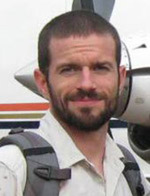Research Interests
- Mammalian ecology in the human landscape
- Investigation and mitigation of human-wildlife conflict
- Estimation of wildlife abundance and occupancy for management applications
- Camera traps as a tool to answer novel and applied questions
Education
- PhD in zoology, Michigan State University
- MS in wildlife ecology, Southern Illinois University at Carbondale
- BS in natural resources and wildlife ecology, Cornell University
Experience
Dr. Kolowski’s doctoral work investigated interactions between humans and large carnivores in and around the Masai Mara National Reserve in southwest Kenya, with a focus on spotted hyena spatial ecology and analysis of livestock depredation patterns. His post-doc research investigated the effects of oil exploration on the behavior and ecology of ocelots, primates, and other mammals in northern Peru. Since late 2009, Dr. Kolowski has managed the Smithsonian-Mason School of Conservation’s graduate- and professional-level capacity building programs.
Joe capitalizes on his experience in international research, university teaching, and community outreach and education to ensure that the success of these programs not only continues but increases in the coming years. He continues to be involved in various research programs within SCBI, and has increasingly specialized in the use of camera traps in wildlife research and management. He has worked on a range of projects around the world using these motion-triggered cameras to monitor wildlife, and he brings this experience to bear in teaching one of SMSC’s most popular courses: Camera Trapping Study Design and Data Analysis. Dr. Kolowski serves on various PhD dissertation committees at Mason, where he is an affiliate faculty member.
Selected Publications
Kolowski, J., and T. Forrester. 2017. Camera trap placement and the potential for bias due to trails and other features. PLoS ONE 12(10): e0186679. https://doi.org/10.1371/journal.pone.0186679
Gregory, T. Carrasco-Rueda, F., Alonso. A., Kolowski, J., and J. Deichmann. 2017. Natural canopy bridges effectively mitigate tropical forest fragmentation for arboreal mammals. Scientific Reports 7: 3892.
Gregory, T, Rueda, F. C., Deichmann, J.L., Kolowski, J., and A. Alonso. 2014. Arboreal camera trapping: Taking a proven method to new heights.Methods in Ecology and Evolution 5:397-494.
Vanthomme, H., Kolowski, J., Korte, L., and A. Alonso. 2013. Distribution of a Community of Mammals in Relation to Roads and Other Human Disturbances in Gabon, Central Africa. Conservation Biology 22:281-291.
Kolowski, J.M., and A. Alonso. 2012. Primate abundance in an unhunted region of the northern Peruvian Amazon, and the influence of seismic oil exploration. International Journal of Primatology 33: 958-971.
Kolowski, J.M., and A. Alonso. 2010. Density and activity patterns of ocelots (Leopardus pardalis) in northern Peru and the impact of oil exploration activities. Biological Conservation 143: 917-925.
Kolowski, J.M., and K.E. Holekamp. 2009. Ecological and anthropogenic influences on space use in the spotted hyena. Journal of Zoology 277:23-36.
Kolowski, J.M., and K E. Holekamp. 2006. Spatial, temporal, and physical characteristics of livestock depredations by large carnivores along a Kenyan reserve border. Biological Conservation 128:529-541.
Courses Taught
- CONS 625/MCCS 0501: Statistics for Ecology and Conservation Biology
- CONS 630/MCCS 0503: Species Monitoring and Conservation – Terrestrial Mammals
- CONS 645/MCCS 0511: Estimating Animal Abundance and Occupancy
- CONS 697/MCCS 0524: Camera Trapping Study Design and Data Analysis for Occupancy and Density Estimation


